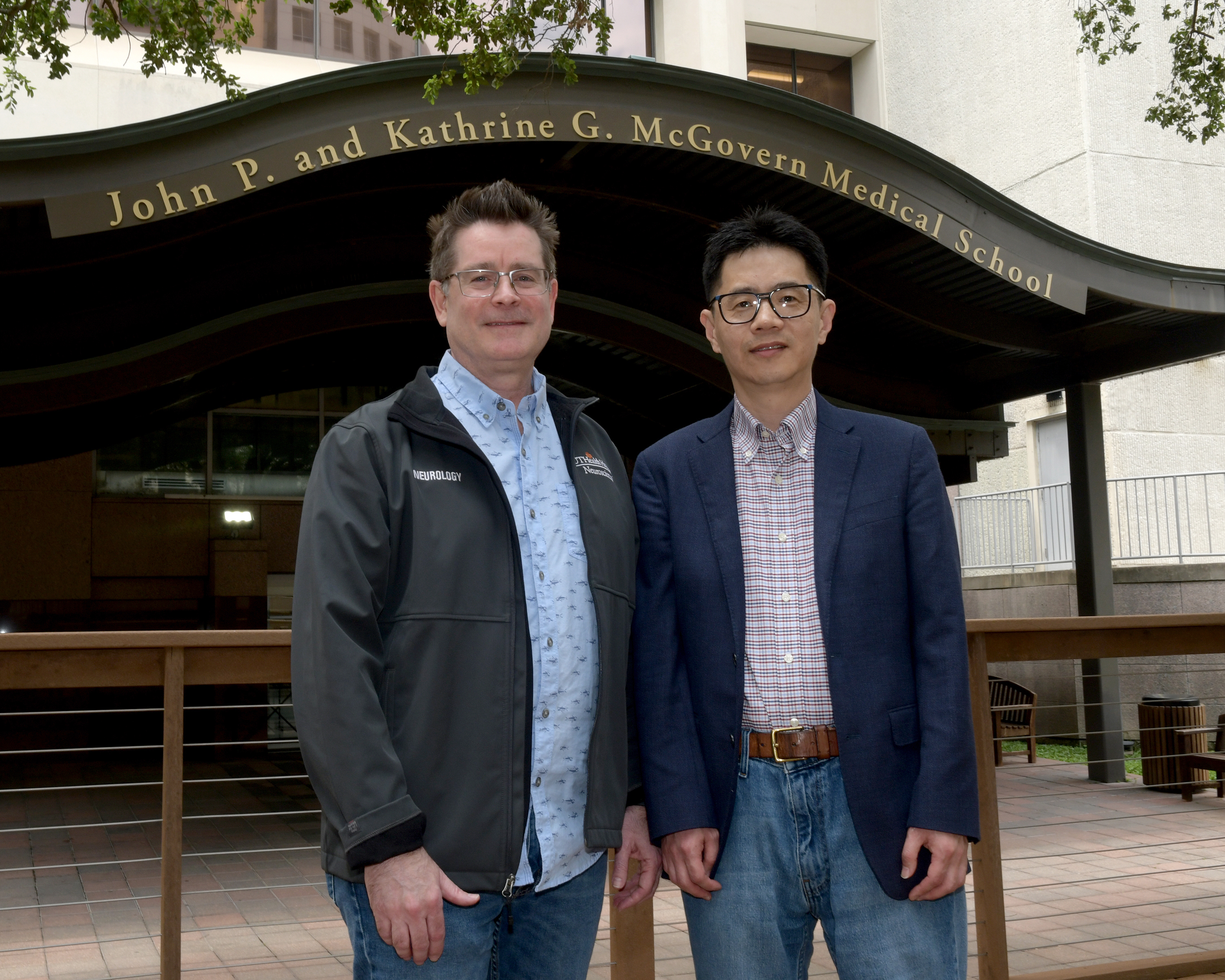Research identifies novel gene regulator of microglial inflammation

Recent research by Gab Seok Kim, PhD, and Sean P. Marrelli, PhD, on interferon proteins and how they spread neuroinflammation in the brain has been published in Nature Communications. Kim is an assistant professor in the Department of Neurology and Marrelli is a professor in the Department of Neurology and director of the BRAINS Research Laboratory. The paper titled, “Single-cell analysis identifies Ifi27l2a as a gene regulator of microglial inflammation in the context of aging and stroke in mice,” can be found here.
“Our bodies use a variety of systems to fight against viral infection, including the induction of interferon proteins and interferon-induced proteins,” the researchers said. “With brain aging or injury however, some of these same systems become activated and contribute to the worsening of brain inflammation.”
To better understand how many individual interferon-induced proteins contribute to spreading neuroinflammation in the brain, the labs used a single cell RNA sequencing (scRNAseq) approach, with which they discovered the significant upregulation of an interferon induced gene (Ifi27l2a) from the post-stroke brain of a murine model.
“Our analysis revealed that Ifi27l2a was highly upregulated, particularly in the microglia from stroke brain,” the team said. “Since the role of this gene was poorly defined, we used a combination of primary microglial cell culture and an in vivo murine stroke model to define the mechanism and functional contribution of Ifi27l2a to brain inflammation and neurodegeneration in the context of aging and stroke.”
Interferon signaling is a well-known pathway that activates numerous interferon-stimulated genes (ISGs) and plays a significant role in promoting neuroinflammation, however the individual contributions of specific ISGs to inflammatory processes in the brain remain incompletely understood. With this study, Kim and Marrelli discovered that Ifi27l2a is a key ISG that contributes to inflammation associated with aging and stroke in the brains of murine models. In addition, its human counterpart (IFI27L2) was similarly upregulated in post-stroke human brain samples.
The labs further showed that Ifi27l2a promotes a pro-inflammatory phenotype in microglia, characterized by increased reactive oxygen species (ROS) production and metabolic changes in mitochondria. Using an ischemic stroke murine model, the team showed that hemizygous deletion of Ifi27l2a dampened brain inflammation, reduced long-term brain atrophy, and improved neurological outcomes.
“The significance of the observed benefit with this partial reduction of Ifi27l2a expression is encouraging for the potential of future efforts to provide pharmacological or antibody targeting of the Ifi27l2a protein,” the researchers said. “Overall, these studies lay the foundation for the selective targeting of Ifi27l2a as one of the pro-inflammatory ISGs induced in aging and stroke.”
Moving forward, the labs will continue to investigate the detailed mechanisms by which Ifi27l2a expression contributes to neuroinflammation through its effects on mitochondrial function.
“We will further seek to identify the various partner proteins involved in Ifi27l2a signaling,” the researchers said. “We are currently developing novel tools to attenuate Ifi27l2a-mediated signaling and thereby reduce inflammation and improve recovery after stroke.”
Kim and Marrelli gratefully acknowledge Louise McCullough, MD, PhD, professor and Roy M. and Phyllis Gough Huffington Distinguished Chair in the Department of Neurology and associate vice president for research at UTHealth Houston Neurosciences, for providing the pilot funding for the initial scRNAseq experiments and multiple other intellectual and experimental resources used throughout the study. They additionally acknowledged the contributions and resources from the BRAINS Research Laboratory